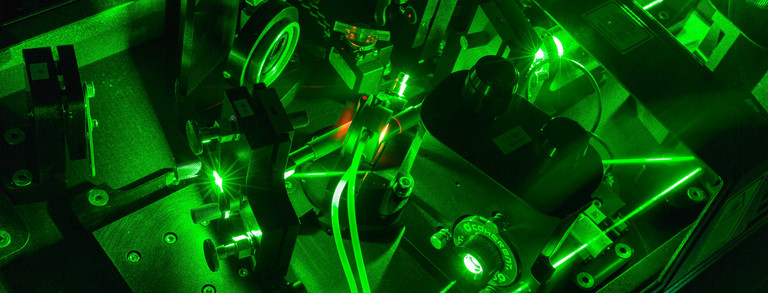AG Jun. Prof. Dr. Marc Aßmann
Semiconductor Quantum Optics
Our experimental group works in the field of semiconductor quantum optics, which is a novel and innovative topic at the interface between solid state physics and quantum optics. Traditionally, quantum optics deals with the interaction of quantized light fields with systems such as dilute gases at temperatures close to absolute zero temperature. When trying to transfer these quantum information technologies to a more application-friendly semiconductor setting, additional difficulties and challenges arise:
Coherence times in semiconductor systems are typically three orders of magnitude smaller compared to their atomistic counterparts, all atoms share exactly the same characteristics, while tailored and engineered semiconductor structures may show deviations from each other and carriers in semiconductors are always subject to interactions with the many-body host crystal surroundings, while cold atoms may be kept and investigated in vacuum.
Our group develops spectroscopic techniques and experimental strategies suitable for the demanding challenges of studying quantum optical phenomena in a semiconductor surrounding. Some of the topics we currently study are given below.
Ultrafast Photon Number Statistics
The photon number distribution of a light field yields precise information about its properties. However, measuring the photon number statistics appropriately requires a temporal resolution better than the coherence time of the light field. For semiconductor light sources, this timescale may be as short as few picoseconds, which renders standard approaches from cold atom physics problematic. We have developed a streak camera technique that is able to monitor individual photon detection events with a temporal resolution of 2 picoseconds. This technique has a wide range of applications, ranging from a precise characterization of lasing thresholds to investigating correlated photon emission.
Continuous Variables and Semiconductors Light Sources
Besides the photon number, also the phase properties of light fields are of central interest. These are typically studied using continuous variables in phase space by means of homodyne detection. A stable phase reference, the so-called local oscillator, forms the basis of this experimental technique. For most electrically or non-resonantly pumped semiconductor light sources, such a phase reference is not available. We develop special multiport homodyne detection techniques that allow us to acquire phase-space information even in the absence of a well-defined phase reference.
Optically Imprinted Circuits
Non-resonant optical excitation of a semiconductor creates free electrons and holes, which interact with other particles. For example, they provide a repulsive potential for exciton-polaritons, mixed light-matter quasiparticles with extremely small mass. By spatially tailoring the shape of a laser spot, we are able to engineer functional potential landscapes for polaritons, which enable us to create reconfigurable optically imprinted circuits. Examples of functional elements already realized include elements changing the path of traveling polaritons and polariton amplifiers. Further, effective manipulation of their polarization and orbital angular momentum properties is one of our focus topics.
Current offers for Bachelor-, Master- or PHD-theses
Please contact Marc Aßmann if you are interested in thesis work on these topics.
Contact
- Jun.-Prof. Dr. Marc Aßmann



